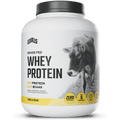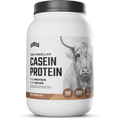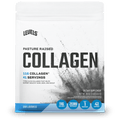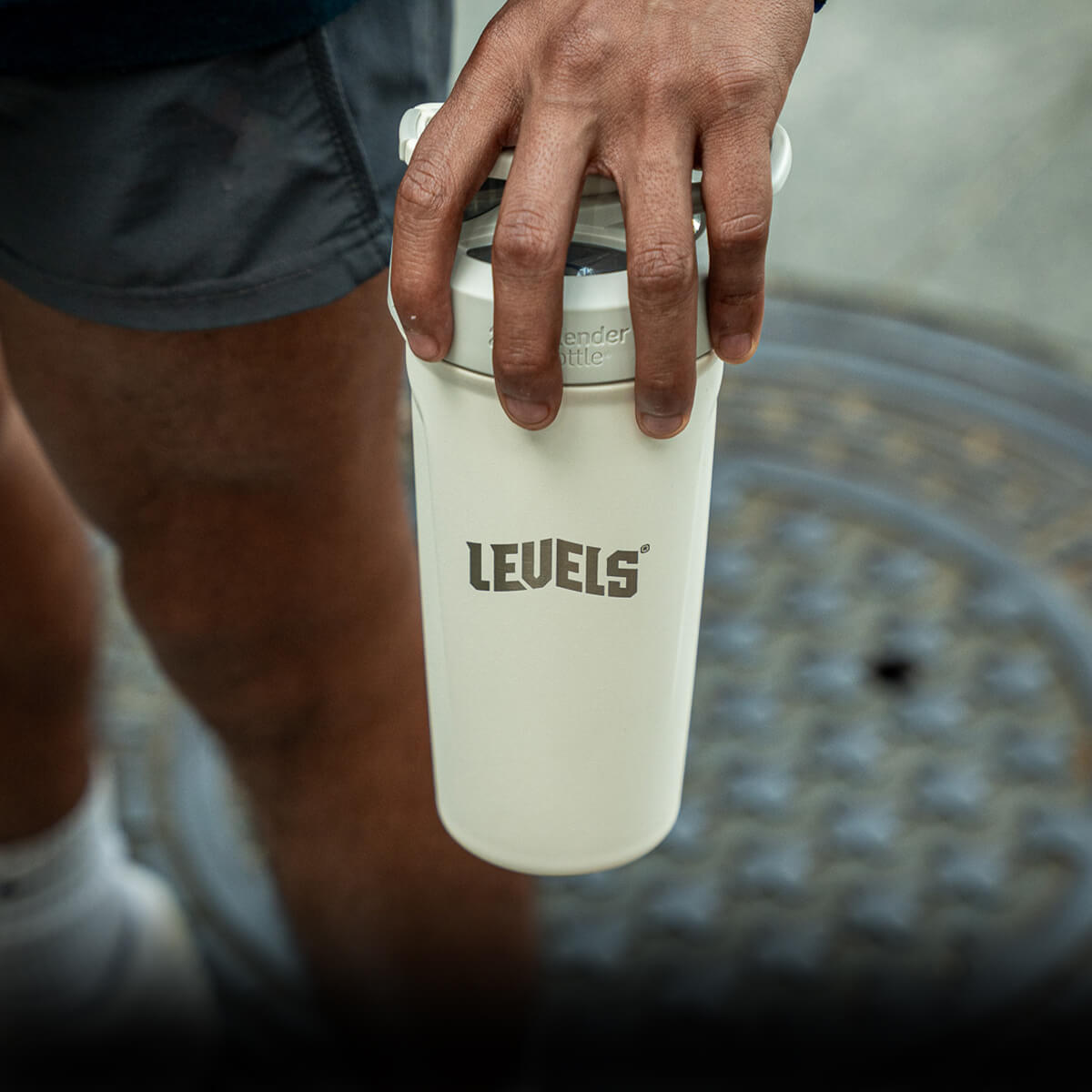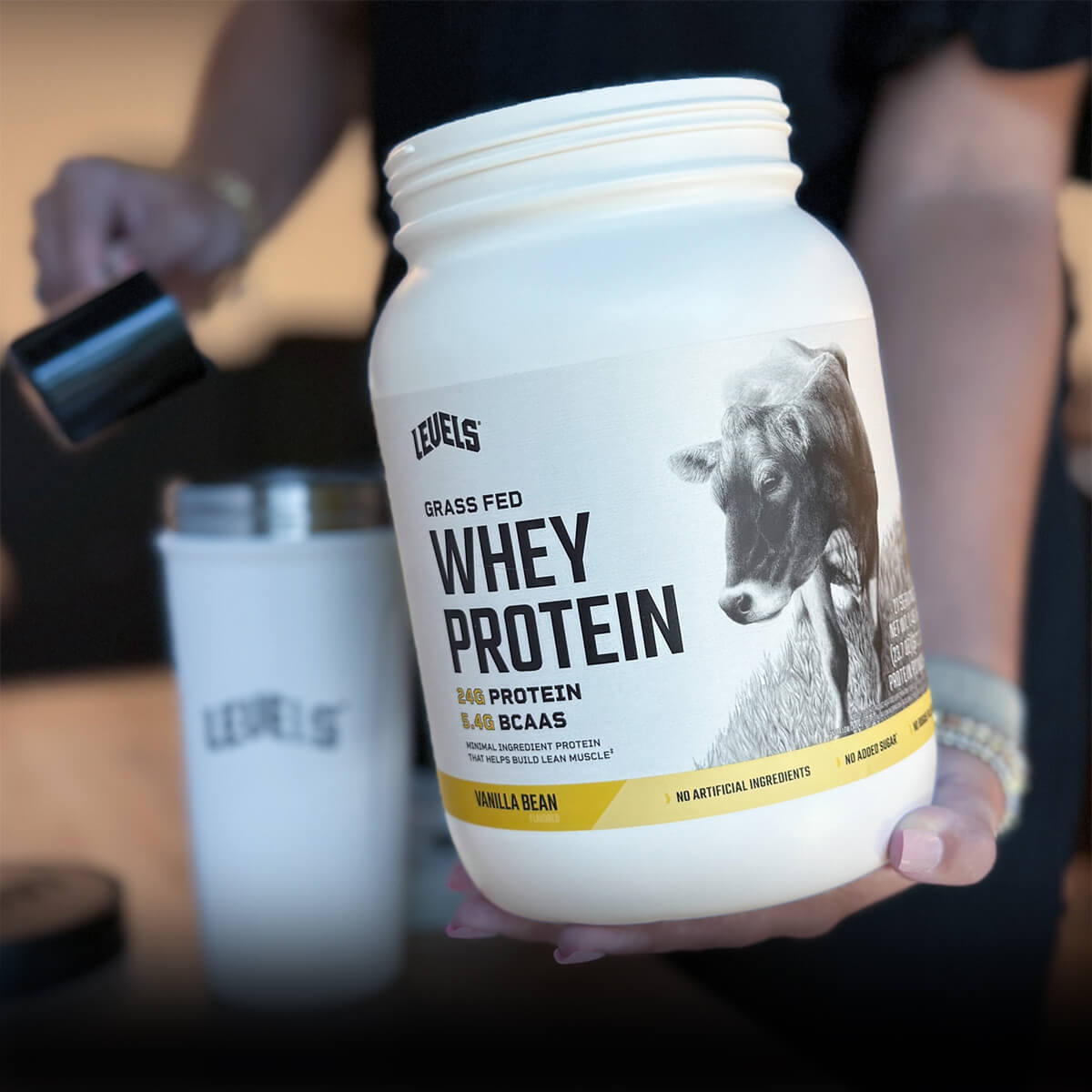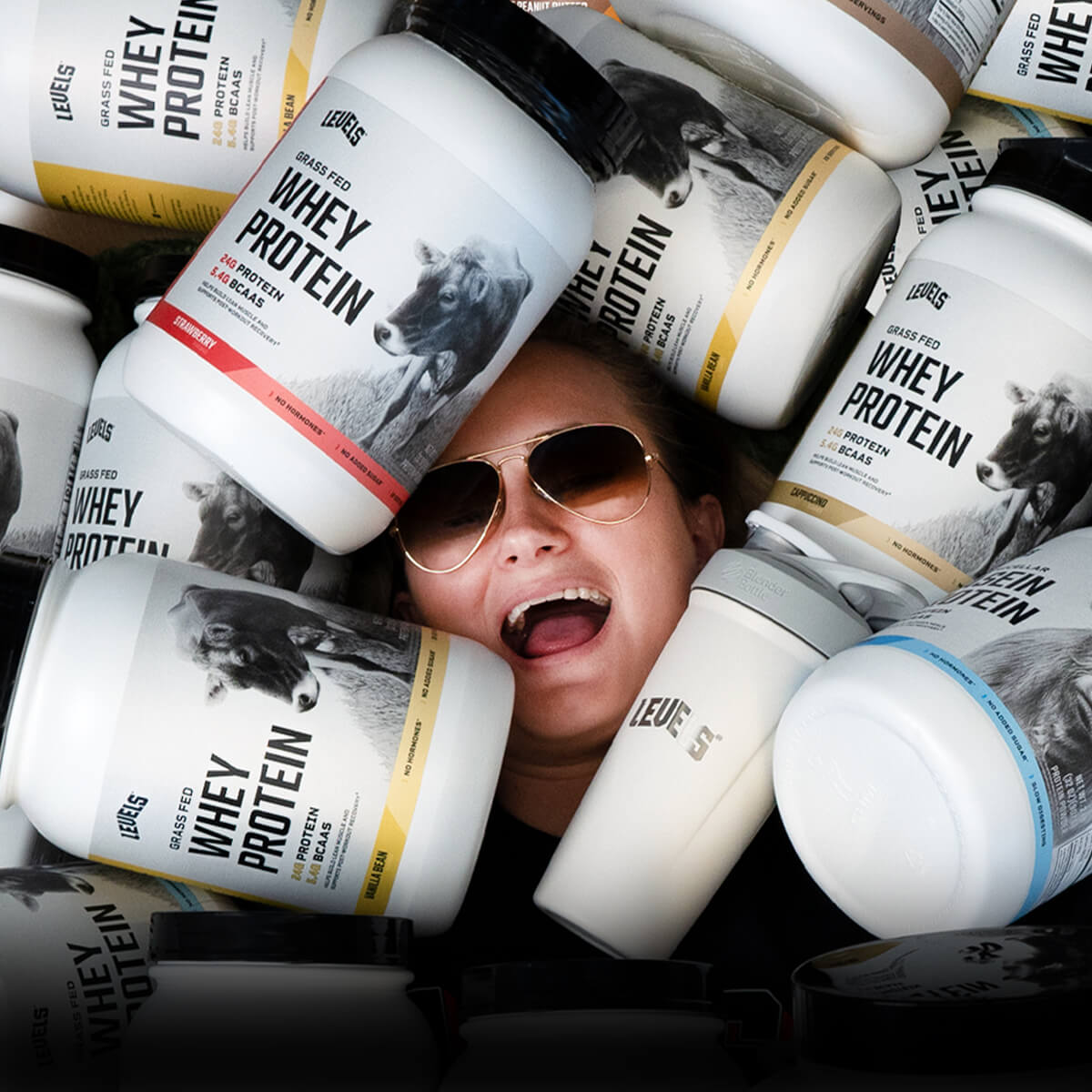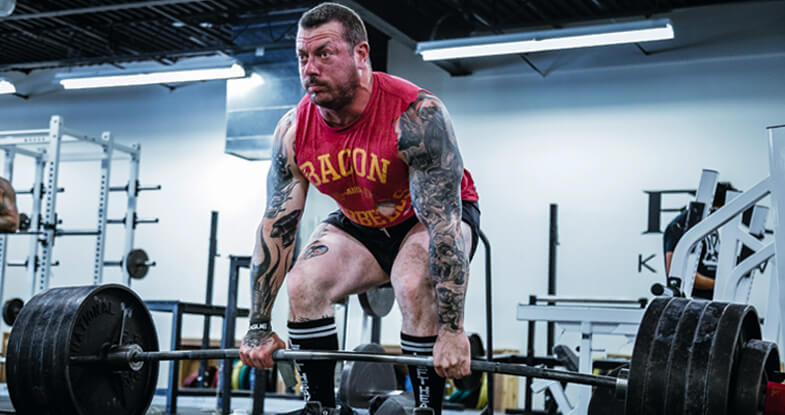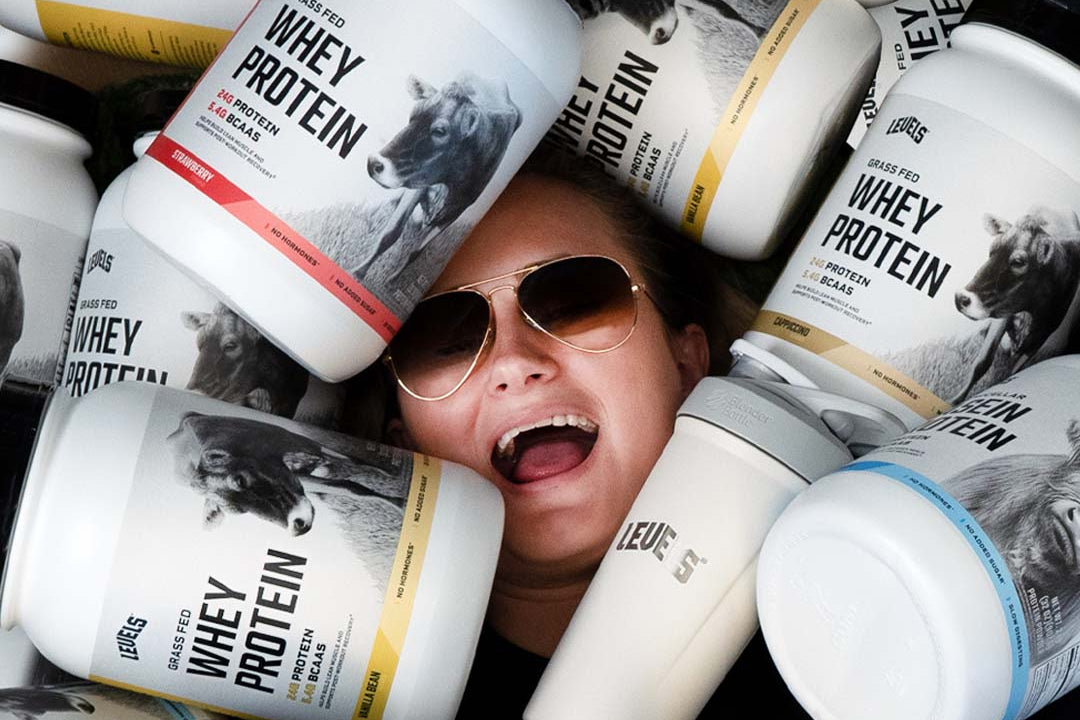Research shows lifting weights can enhance your general health, speed, explosiveness, endurance, muscular size, and strength[*][*].
However, the optimal weight training method varies depending on your goals.
In this article, we’re comparing lifting for hypertrophy versus strength.
For best results, you’ll need to make up your mind before you hit the weight room.
Keep reading to learn the differences and similarities between hypertrophy and strength training, guidelines for both, and which lifting style is best for you.
Hypertrophy vs. Strength Training: What’s the Difference?
Hypertrophy (pronounced hai-PER-truh-fee) is a technical term that refers to the growth of tissues in your body. And although scientists also use it to describe other types of growth, today we’re only looking at muscular growth.
In other words, when you see the word “hypertrophy” in a fitness context, it typically means getting bigger, bulking up, or building muscle.
On the other hand, strength training focuses on increasing your physical strength, which you can measure by the amount of force you can exert on a physical object.
One way of gauging strength is by testing your ability to lift heavy weights in the gym.
However, some people prefer to prepare their bodies for real-life activities, so they focus on functional fitness or functional strength.
Additionally, maximal strength refers to your ability to lift a heavy weight for one repetition, but there are also other types of strength.
For example, relative strength describes how much force you can generate per unit of bodyweight — such as how many pull-ups you can perform, or a double bodyweight deadlift.
And in the fitness world, there are fantastic examples of individuals that exemplify each quality:
- Bodybuilders are all about hypertrophy — they want to be as big and muscular as possible
- Powerlifters prioritize maximal strength, but because most of them are weight class athletes, they also focus on relative strength
Even if you don’t care about competing in bodybuilding or powerlifting, you can still learn valuable training lessons from participants in these activities.
But before we review practical examples of each training approach, let’s dive deeper into the similarities and differences.
Differences Between Hypertrophy and Strength Training
- Consistency: strength training requires a more consistent approach to exercise selection to increase muscular strength continually
- Variety: hypertrophy training changes up exercises relatively frequently and may use novel “muscle confusion” techniques to ensure steady growth
- Compound lifts: strength training consists mainly of compound exercises (except for assistance movements for injury prevention and muscular balance)
- Isolation lifts: hypertrophy training requires compound lifts, but single-joint and isolation movements are also highly effective for muscular growth
- Free weights: strength training typically uses a majority of free weight exercises
- Machines: plenty of bodybuilders and other people who train for hypertrophy may use machines for half or more of their exercises
- Lower reps: strength training almost always includes fewer reps per set (except for some assistance movements)
- Higher reps: hypertrophy training focuses on all rep ranges, generally speaking
- Lower volume: strength training typically uses lower overall volume per muscle group, per workout, and per week
- Higher volume: overall, hypertrophy training volume varies, but is usually higher than strength training
- Simplicity: strength training works fine with just a few exercises per muscle group
- Complexity: hypertrophy training may include many different exercises to fully stimulate each muscle group
- Speed: strength training primarily uses faster, more explosive lifting tempos
- Control: hypertrophy training may use a variety of tempo ranges to build muscle, including super-slow
- Recovery nutrition: the role of diet for strength goals is to support training by promoting recovery and helping repair muscles
- 24/7 nutrition: for hypertrophy, proper diet (including caloric surplus, sufficient protein, and other macros) can make or break your progress all by itself
Similarities Between Hypertrophy and Strength Training
- Beginners can get bigger and stronger at the same time with less effort or planning than more advanced individuals
- Compound lifts (such as squats, deadlifts, bench press, overhead press, rows, and pull-ups) work best for hypertrophy as well as strength
- Training splits: upper-lower, full-body, and push-pull training splits can all work for both goals, depending on the individual
- Strength matters: no matter what, you must get stronger to get significantly bigger
- Size counts, too: if you get dramatically stronger, you will probably also get bigger (unless you take specific steps to avoid growing, like limiting your food intake)
- Overload: both training styles utilize progressive overload, the gradual increase of weights or repetitions over time to enhance muscular fitness
- Dedication: reaching your full potential in hypertrophy or strength takes years of hard work
- Height: shorter people generally have an easier time lifting heavier weights (due to a shorter bar path and more leverage) as well as filling out their frames (a pound of muscle is more noticeable if you are shorter as opposed to taller)
How to Use Strength and Hypertrophy Training

As you just learned from the previous sections, strength training and hypertrophy are essentially two sides of the same coin.
In other words, getting stronger helps you build muscle, and increasing the size of your muscles also allows you the opportunity to build more strength over time[*].
Therefore, while you may have a long-term goal of either strength or hypertrophy, ignoring either training approach altogether is probably a mistake.
And not only that, but even hardcore powerlifters and bodybuilders sometimes shift to other ways of lifting temporarily — during the offseason, for fun, for a mental and physical break, or to break through a plateau.
If you research strength or muscle-building training programs, you’ll find you’ve got dozens of exciting options. However, make sure that the plan you choose is similar to the guidelines below.
Strength Training Guidelines
- Lift 2-4 days per week (twice a week is a good idea if you work a demanding job or have other training going on, but you’ll get better strength results with at least 3 days per week)
- Organize your split around movements, not muscle groups
- After warming up, begin each workout with 1-3 heavy compound lifts (such as squats, deadlifts, bench press, overhead press, or pull-ups)
- Depending on your experience and skill, you’ll be performing about 5-10 sets of 1-5 reps per compound lift to get stronger
- Lift explosively and use a 1-second negative (lowering) phase
- Use rest periods of 2-4 minutes between heavy lifts
- Beat your personal record by adding weight or reps when possible
- After your heavy lifts, you can perform some lighter-weight assistance compound and isolation exercises with 5-25+ reps
- For your assistance exercises, use rest periods of 1-2 minutes and a tempo of your choice
- Each workout should take around 45 minutes
- Consume a whey protein shake after you finish lifting
Hypertrophy Training Guidelines
- Lift 3-6 days per week (for most people, 3-5 days is optimal, but don’t lift every day)
- Organize your split around muscle groups rather than movements
- Incorporate a blend of compound and isolation lifts, as well as free weights and machines
- After warming up, focus most of your effort on sets with 5-12 reps, but consider including some sets in the 1-4 and 13-25+ rep ranges as well
- Lift heavier with lower reps early in the workout, then add reps and decrease the weights later in the workout
- Techniques like supersets, drop sets, and rest-pause sets can increase your intensity, save time, and help you avoid plateaus
- Beat your personal records by adding weight or reps when possible
- Use rest periods of 1-3 minutes (or less between supersets)
- Consider finishing your workouts with lightweight “pump sets” of 25-100 reps and a piston-like “1-0-1” tempo (1-second lowering, no pause, 1-second lifting) to increase blood flow and nutrient delivery to your muscles
- Each workout may take up to an hour or slightly longer
- Have a protein shake after training
Also, keep in mind that you can focus on strength and hypertrophy at the same time. In that case, you would simply pick and choose from the approaches above, making sure to emphasize heavy lifts.
Strength vs. Hypertrophy: How to Choose (And Where to Begin)
Are you having trouble deciding how to train?
First of all, you need to get clear on what your main goal is.
Most athletes, as well as people who work dangerous, demanding jobs should focus primarily on building strength and general fitness.
In contrast, getting bigger can reduce your risk of injury, lower your risk of chronic diseases, and help you age more gracefully[*][*][*].
But if you’re brand-new to lifting or haven’t trained in a while, the good news is that you can achieve both aims at once, at least initially.
Because your body isn’t accustomed to lifting, you’ll experience rapid progress in both strength and hypertrophy, a phenomenon called “newbie gains.”
Therefore, if you’re a beginner who wants to get stronger, start with a hypertrophy training program. You’ll be able to add weight to the bar and get bigger and stronger quickly at first, then switch to pure strength training once your newbie gains are over.
On the other hand, if you’re an athlete who cares about relative strength, stick with pure strength training, keep your volume fairly low, and limit your calories so you don’t gain unwanted weight.
Another winning approach to getting extremely strong is to join a local powerlifting club or organization. If you hang out with exceptionally strong people, you’ll find it much easier to get stronger, yourself.
Conversely, if you’re all about gaining size, you should spend the majority of your lifting career training for hypertrophy. However, you’ll need to switch up your approach a few times a year, and you may also find that a couple of months of pure strength training per year will help you break through plateaus.

Finally, don’t forget that, along with your training, nutrition matters — regardless of your goal.
If your primary goal is strength or general fitness, a smart nutritional strategy helps you recover faster and train harder.
But if your goal is hypertrophy, calories and macros may be even more important than training. After all, you may spend 4-6 hours in the gym per week, but your body requires adequate nutrition to do its job for the remaining 160+ hours.
The Takeaway
In the end, neither strength nor hypertrophy is better. They’re intertwined, and you should probably focus on both.
But if you still aren’t sure how to train right now, start by deciding on your main goal: strength or hypertrophy.
Fortunately, beginners can achieve both goals at once with relatively simple training programs, so there’s no need to overthink things if you’re new.
Also, half the fun of lifting is exploring different training styles and discovering what works best for you. Therefore, don’t be afraid to experiment, regardless of your goals.
And if you’re still hungry for more training tips, we’ve got you covered.
Check out High Reps Vs. Low Reps? What Science Says About Rep Ranges for research-backed details on rep ranges for hypertrophy, strength, and other lifting goals.
Additionally, The Ultimate Muscle Groups Guide & How To Best Train Them is the best resource to help ensure your body stays in balance and injury-free.
Lastly, for a deeper understanding of overall volume and exercise selection, don’t miss How Many Exercises Per Muscle Group? The Definitive Guide.
